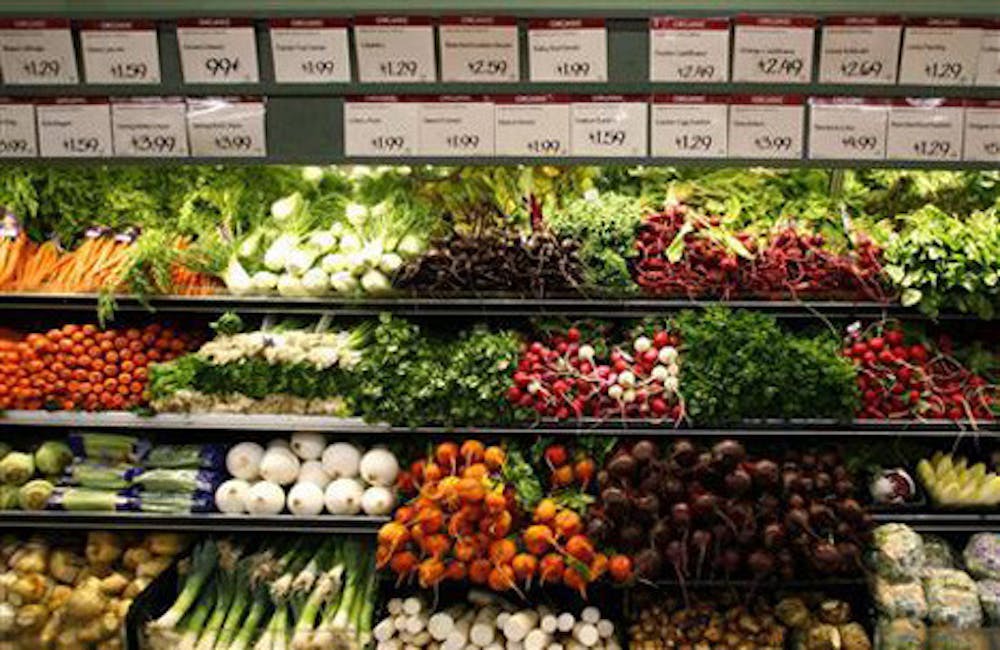Organic
According to Huffington Post’s contributor Robyn O’Brien, “the term ‘organic’ refers to foods grown and processed without chemical toxins, artificial ingredients, chemical preservatives or ionizing radiation.” The U.S. Department of Agriculture regulates the guidelines for organic foods. For a food to be labeled “organic” it must be have at least 95 percent organic ingredients. Organic foods are made without harmful pesticides, fertilizers, antibiotics or synthetic hormones.
According to O’Brien, a recent study found that organic foods can actually boost one’s immune system, improve sleeping habits and reduce the risk of cancers and heart disease. So what does this mean for your grocery cart? Purchasing organic milk or eggs means that the products came from animals that were not given antibiotics, drugs or synthetic growth hormones. Organic bread, cereal and grains were grown without the use of pesticides.
So, what does this mean for your wallet? Organic foods tend to be more expensive and can even cost up to 50 percent more than non-organic products. If the higher cost is keeping you from buying organic, consider the products that are most important to buy organic: apples, celery, sweet bell peppers, peaches, strawberries, spinach, nectarines, grapes, lettuce, cucumbers, blueberries and potatoes.
Natural
The USDA regulates the term “natural” only in meat and poultry products. In this context, the label means these products contain no artificial substances or additives- excluding genetically modified organisms. “Natural” on other foods and products mean that it is free of added colors, artificial flavors and synthetic substances. However, the FDA does not have a set guideline for the term. Some companies use the term “natural additives” for high fructose corn syrup. The bottom line here is that something claimed to be “natural” isn’t necessarily good for it. The food can still be loaded with sugar, fat and calories. The only way to get around this trap set up by marketers is to read the ingredient list and nutrition facts carefully.
Whole
A “whole” food is a food that is in its pure and natural form with nothing added to it or taken from it. Think about a potato. A potato is a whole food. Mashed potatoes have been baked, pounded, and mixed with butter and sugar. You can’t find mashed potatoes in nature. Whole foods are the opposite of processed foods. Some examples of whole foods include fruits, vegetables, grains, nuts and seeds. It is important to include many whole foods into your everyday diet to maintain a healthy lifestyle.
Raw
The raw food diet seems to the latest craze in the world of health foods. For a food to be considered “raw” it must not be heated above 115 degrees Fahrenheit. This means no foods are cooked. It is mostly a plant-based diet. The idea behind the raw food diet is that many nutrients and enzymes are destroyed from the heat of the cooking process. Many foods are in their most nutritious state when raw. However, this diet ignores the notion that some foods become more nutritious after they have been cooked. For example, biotin, a nutrient that gives us healthy hair, nails, skin and bones, is activated when eggs are cooked. Raw eggs don’t have the benefits of biotin. The raw food diet has recently been a topic of discussion; a study revealed that an all-raw food diet doesn’t provide enough energy to support the human brain. The bottom line here is to recognize the health benefits of eating raw foods, but like everything else, we shouldn’t get carried away with an exclusive fad.
Gluten-Free
Gluten is a protein found in wheat, rye and barley. Products like bread, grains, cake, pasta, cookies, sauces and snack foods typically contain gluten. However many foods have hidden sources of gluten. Gluten can be found in many natural or artificial additives. Those diagnosed with celiac disease or gluten sensitivity should follow a gluten-free diet, but should be done so under the supervision of a doctor.
The gluten-free diet has become a trend among celebrities who have not been diagnosed with celiac disease or gluten sensitivity. Some have tried the diet just to lose weight. The bottom line here is that some gluten-free foods are higher in calories than the originals. Many gluten-free products are packed with sugar and fat. Unless you are avoiding gluten for health reasons provided by your doctor, you’re better off sticking to a traditional, balanced diet. For more information about celiac disease and the gluten-free diet, visit www.celiac.org. Be sure to consult a doctor or nutritionist before beginning any new diet plan and before eliminating any major food group from your diet.






